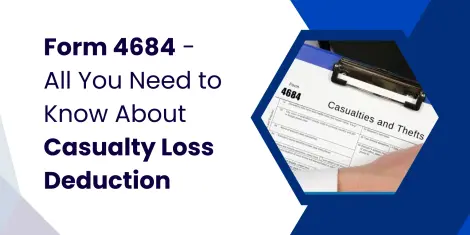Table of Contents
Saving for retirement is crucial for securing your financial future, and the government recognizes the importance of encouraging individuals to build their future through life savings. The Saver's Tax Credit, also known as the Retirement Savings Contributions Credit, is designed to incentivize retirement savings by offering a valuable tax break to eligible individuals. Let’s understand the intricacies of the Saver's Tax Credit, its eligibility criteria, and strategies to maximize its benefits.
What Is the Saver's Tax Credit?
The Saver's Tax Credit is a non-refundable tax credit that directly reduces the amount of federal income tax you owe. Unlike a deduction, which lowers your taxable income, a tax credit provides a dollar-for-dollar reduction in your tax liability. The Saver's Credit is specifically intended to encourage retirement savings by providing a financial incentive for making contributions to eligible retirement plans like 401(k), 403(b), and traditional or Roth IRAs. The credit rate ranges from 10% to 50% of your contributions, depending on your adjusted gross income and tax filing status, with lower-income filers qualifying for higher credit rates. This credit is a valuable incentive for individuals and households to prioritize saving for retirement.
Eligibility Criteria
To qualify for the Saver's Tax Credit, you must meet the following criteria:
Age 18 or older- The credit is available to individuals who have reached the age of 18 or older by the end of the tax year. This requirement ensures that the credit benefits individuals who are legally considered adults and are eligible to contribute to retirement accounts.
Not claimed as a dependent- If you are claimed as a dependent on someone else's tax return, you are ineligible for the Saver's Tax Credit. This criterion is in place to prevent individuals from claiming the credit twice, as the person claiming you as a dependent may already be receiving tax benefits related to your financial situation.
Not a full-time student- Full-time students are generally ineligible for the Saver's Tax Credit. This is because they are often claimed as dependents by their parents or guardians, and their income levels may not warrant the need for additional retirement savings incentives.
Failure to meet any of these requirements may result in your ineligibility for the credit.
How Much Is the Credit Worth?
The Saver's Tax Credit can be worth up to $1,000 for individuals or $2,000 for married couples filing jointly. The actual amount of the credit is calculated based on your contribution to eligible retirement accounts and your adjusted gross income (AGI) for the tax year.
It's important to note that the Saver's Tax Credit is a credit, not a deduction. A deduction reduces your taxable income, while a credit directly reduces the amount of tax you owe. For example, a $1,000 tax credit is more valuable than a $1,000 deduction for individuals in higher tax brackets.The credit is calculated as a percentage of your eligible retirement contributions, up to the maximum credit amount. Eligible contributions include those made to the following accounts:
- Traditional or Roth Individual Retirement Accounts (IRAs)- Contributions to traditional IRA or Roth IRAs, including rollovers or transfers from other retirement accounts, are eligible for the Saver's Tax Credit. The credit can be claimed on the total amount you contribute to these IRAs during the tax year, up to the applicable limits.
- 401(k), 403(b), 457(b), SARSEP, or SIMPLE plans- Contributions you make to employer-sponsored retirement plans, such as 401(k), 403(b), 457(b), SARSEP, or SIMPLE plans, are eligible for the Saver's Tax Credit. This includes both pre-tax and after-tax contributions, as long as they are made through payroll deduction.
- Voluntary after-tax employee contributions-If you make voluntary after-tax contributions to your employer's retirement plan, those contributions may also be eligible for the Saver's Tax Credit. This is in addition to any pre-tax or Roth contributions you make to the plan.
- ABLE accounts (beginning in 2018)- Starting in 2018, contributions made to ABLE accounts (Achieving a Better Life Experience) are eligible for the Saver's Tax Credit. ABLE accounts are tax-advantaged savings accounts for individuals with disabilities, and the credit can be claimed on the total amount contributed to these accounts during the tax year.
Income Limits
Eligibility for the Saver's Tax Credit is based on your adjusted gross income (AGI) and filing status. The credit is available to individuals with AGIs below certain thresholds, which are adjusted annually for inflation. For the 2023 tax year, the income limits are as follows:
|
Married filing jointly |
||
|
50% of contribution |
20% of contribution |
10% of contribution |
|
AGI of $46,000 or below. |
$46,001 - $50,000. |
$50,001 - $76,500. |
|
Head of household |
||
|
50% of contribution |
20% of contribution |
10% of contribution |
|
AGI of $34,500 or below. |
$34,501 - $37,500. |
$37,501 - $57,375. |
|
Other filers |
||
|
50% of contribution |
20% of contribution |
10% of contribution |
|
AGI of $23,000 or below. |
$23,001 - $25,000. |
$25,001 - $38,250. |
Source: Internal Revenue Service
For example, if you are married filing jointly with an AGI of $45,000, you may be eligible for a partial credit. However, if your AGI exceeds $76,500, you would not qualify for the Saver's Tax Credit. The credit rate itself is calculated on a sliding scale, ranging from 10% to 50% of your eligible retirement contributions. Those with lower incomes within the qualifying AGI range receive higher credit rates, providing a more significant incentive for retirement savings. For instance, a married couple filing jointly with an AGI of $40,000 would receive a credit equal to 50% of their eligible contributions, while a couple with an AGI of $76,500 would receive a 10% credit.
It's important to note that these income limits are subject to change each year due to inflation adjustments. The IRS publishes updated thresholds annually, so it's advisable to consult the latest guidelines to determine your eligibility and potential credit amount. By considering these income limits and credit rates, the Saver's Tax Credit aims to provide a targeted incentive for low- and moderate-income individuals to prioritize retirement savings.
Claiming the Credit
Step 1: Determine if your adjusted gross income (AGI) falls within the eligible range based on your filing status. The AGI limits are adjusted annually for inflation. For the 2023 tax year, the limits are as follows: For those Married Filing Jointly, the credit rate phases out at AGIs between $68,000 and $88,000. For Head of Household filers, the credit rate phases out at AGIs between $51,000 and $66,000. For Single, Married Filing Separately, or Qualifying Widow(er) filers, the credit rate phases out at AGIs between $34,000 and $44,000.
Step 2: If your AGI is within the eligible range, calculate the total amount of your qualified retirement savings contributions for the tax year. These contributions can be made to various retirement accounts, including traditional or Roth IRAs, 401(k) plans, 403(b) plans, 457 plans, SIMPLE IRAs, SARSEPs, and certain other qualified retirement accounts.
Step 3: Complete Form 8880 (Credit for Qualified Retirement Savings Contributions) and attach it to your federal income tax return. This form requires you to provide information about your eligible retirement contributions and AGI for the tax year.
Step 4: On Form 8880, report the total amount of your eligible contributions for the tax year, as well as your AGI.
Step 5: The form will then calculate your credit rate based on your filing status and AGI. The credit rate ranges from 10% to 50% of your eligible contributions, with lower-income filers qualifying for higher credit rates.
Step 6: The form will apply the calculated credit rate to your eligible contributions to determine your credit amount.
Step 7: The Saver's Tax Credit is a non-refundable tax credit, meaning it can only reduce your tax liability to zero. If the credit amount exceeds your tax liability, you cannot receive the excess as a refund.
It's important to note that proper documentation and accurate reporting of your contributions and income are crucial to ensuring you receive the maximum benefit from the Saver's Tax Credit. If you are unsure about your eligibility or have questions regarding the credit calculation, it's advisable to consult with a qualified tax professional or refer to the IRS guidelines.
Maximizing Benefits
While the Saver's Tax Credit provides a valuable incentive for retirement savings, there are several strategies you can employ to maximize its benefits:
- Contribute to retirement plans early in the year: By making your retirement contributions early in the year, you can potentially increase your tax refund or reduce the amount of taxes owed for that year.
- Consider both employer-sponsored plans and IRAs: Contributions to both employer-sponsored retirement plans (such as 401(k)s) and individual retirement accounts (IRAs) may be eligible for the credit, allowing you to maximize your savings and credit potential.
- Consult a tax professional: Tax laws can be complex, and your individual circumstances may impact your eligibility and credit amount. Consulting a tax professional can help ensure you take full advantage of the Saver's Tax Credit and other tax-saving opportunities.
- Maximize contributions within income limits: The credit rate is based on a sliding scale, with lower-income individuals receiving a higher credit rate. By contributing as much as possible within the income limits, you can potentially increase your credit amount.
- Explore catch-up contributions: If you are age 50 or older, you may be eligible to make catch-up contributions to certain retirement accounts, such as IRAs and 401(k)s. These additional contributions can further increase your potential credit amount.
Conclusion
The Saver's Tax Credit offers a valuable opportunity for eligible individuals to reduce their tax liability while simultaneously building their retirement savings. By understanding the eligibility criteria, income limits, and credit calculation methods, taxpayers can strategically plan their retirement contributions to maximize the benefits of this incentive. However, navigating the complexities of tax laws can be challenging, especially when it comes to specialized credits like the Saver's Tax Credit.
At NSKT, our team of experienced tax professionals is dedicated to helping you navigate the intricacies of the Saver's Tax Credit and other tax-saving opportunities. We provide personalized guidance and comprehensive solutions to ensure you take full advantage of available credits and deductions. Our expertise in tax planning and retirement strategies can help you to make informed decisions and maximize the benefits of the Saver's Tax Credit, paving the way for a more secure and prosperous retirement.







